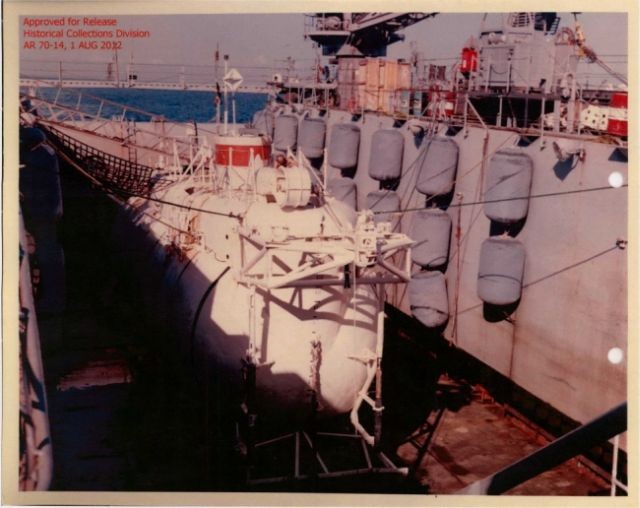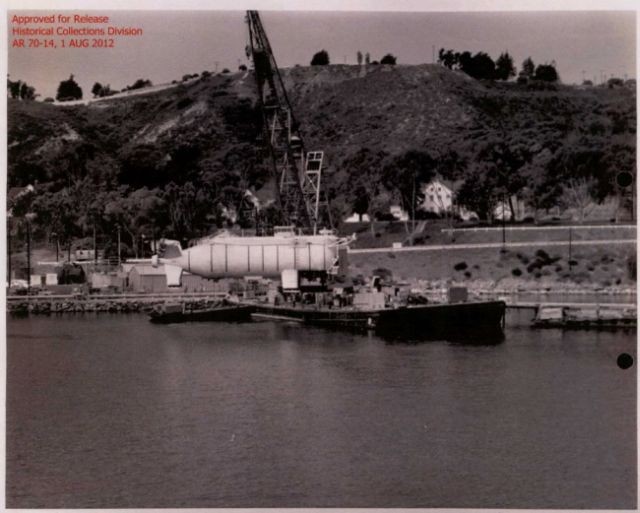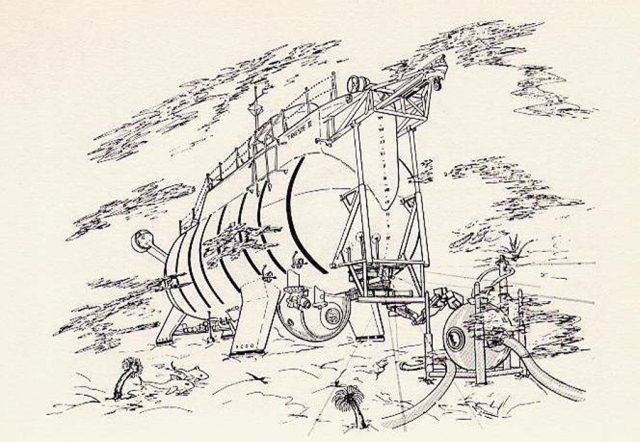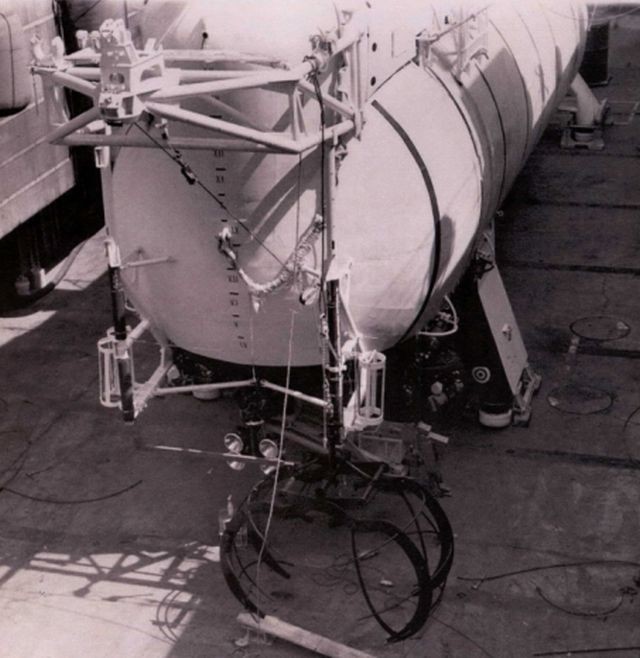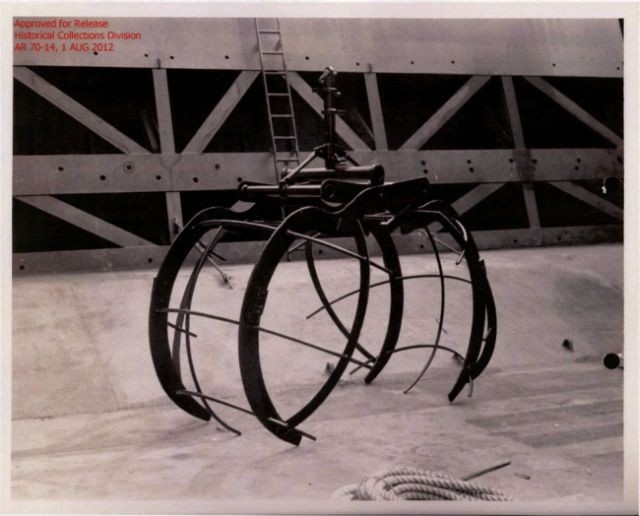1971 – Trieste II Submersible with Manipulator Arm.
DSV-1 Trieste II
When the submarine Thresher was lost on 10 April 1963, a committee established under Admiral Stephan [the Oceanographer of the Navy] to assess the implications of the accident concluded that the Navy did not have the operational assets to conduct missions in the deep sea. The loss of the Thresher was a wake up call for the Navy. A summary of the Thresher search operation in 1965 highlighting the Navy's inadequacy in deep-sea search, location, and rescue noted that the tragedy "demonstrated only too clearly the degree of ignorance and inability which surrounded the entire business."
To rectify this deficiency the Deep Submergence Systems Project, initially assigned to the Special Projects Office responsible for developing the Polaris Fleet Ballistic Missile System, was established to develop deep ocean capabilities. Subsequently other associated development programs were assigned to the Deep Submergence Systems Project office, including the development of the NR-1 nuclear powered research submarine. The intelligence community also established Deep Submergence development requirements.
A decision was made to build a second bathyscaphe, Trieste II, with the original Trieste assigned to the Deep Submergence Systems Project to test equipment that would be employed on other deep submergence systems. The new Trieste II, built at the Mare Island Naval Shipyard in September 1965, was a more sophisticated craft capable of clandestine operations in the deep ocean. DSV-1 Trieste II was designed by the Naval Electronic Laboratory, San Diego, CA, as a successor to Trieste -the Navy's pioneer bathyscaph. Trieste II incorporated the Terni, Italian-built sphere used in Trieste with an entirely new bathyscaph float-one more seaworthy and streamlined. Controlled from the pressure-resistant sphere on the underside, Trieste II was equipped with cameras, sonars, and sensors for scientific observation at great depths. Her instrumentation could be varied to suit the mission in hand. Completed in early 1964, conducted dives in the vicinity of the loss site of Thresher – operations commenced by the first Trieste the year before. She recovered bits of wreckage, positively fixing the remains as that of the lost Thresher, in September 1964.
Subsequently shipped back to San Diego, Trieste II underwent a series of modifications until April 1965, when she was launched on 19 April to undertake the first of many dives as test and training vehicle for the Navy's new deep submergence program. After a series of dives off San Diego, Trieste II underwent further modifications at Mare Island to improve the craft's undersea navigation, control, and small object recovery. When the Scorpion was lost on 22 May 1968, the previously unacknowledged Trieste II was used by the Navy to carry out the investigation.
This unique craft was listed only as "equipment" in the Navy inventory until the autumn of 1969. On 1 September 1969, Trieste II was placed in service, with the hull number X-l. Reclassified as a deep submergence vehicle (DSV) on 1 June 1971, Trieste II (DSV-1) continued her active service in the Pacific Fleet into 1980, and in May 1984 she was assigned to Submarine Development Group 1. She was moved to the Keyport Naval Undersea Warfare Center in 1985. Trieste II made dives as deep as 20,000 feet.
Source: here.
Excerpt by Don Walsh.
Navy Electronics Laboratory (NEL) in San Diego.
Trieste was retired in 1963 at the age of ten, after it had returned to NEL from working at the site where Thresher (SSN-598) had been lost. At least two other versions of Trieste, all named "Trieste II", served with the Navy until 1982. With the retirement of Trieste II the world’s last bathyscaph was gone, since Archimede had been retired in the late 1970s
See 4:23 into clip.
Artists illustration showing another manipulator arm. This arm was commissioned when Trieste II was in DSV-1 guise [Deep Submergence Vehicle-1].
As well as the manipulator arm, Trieste II had a Grapple Hook mounted up front on the bow.
See Trieste [I] here.
See other early Underwater Robots here.


